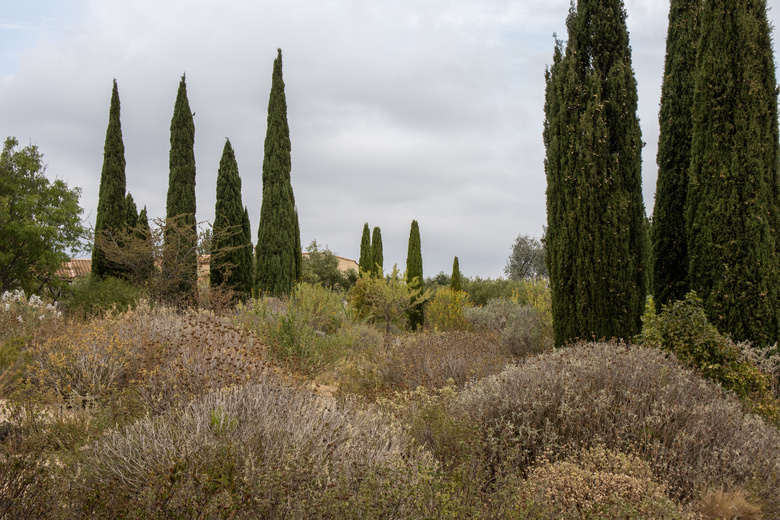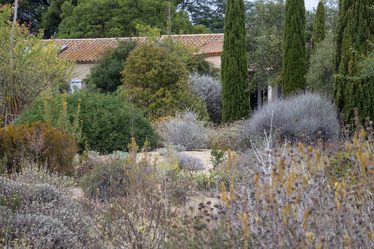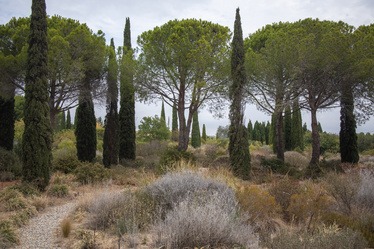travel notes || Le Jardin Sec
a visit to Pépinière Filippi
Last September we were lucky enough to visit the wonderful Mediterranean garden and nursery of Olivier and Clara Filippi near Montpelier in the South of France. Overlooking the oyster rich lagoons of Étang de Thau the garden is a heat-baked space hit by salty coastal winds and filled with drought tolerant plants collected and propogated from Olivier and Clara’s many trips exploring the Mediterranean plantscape and the wider Mediterranean biome.
The day we visited was overcast, the light flat, the clouds promising showers.
Parched from the intense heat of a Mediterranean summer and far from its flower-rich peak in May, the garden was pared back to structural forms in a gentle palette of silver, sage, mauve, gold, bronze and ochre.
Simple paths weave through gravel mounds planted with an undulating mass of domed shrubs interspersed with grasses, emergent perennials and low, creeping groundcover reminiscent of the surrounding garrigue. Although the garden was starting to come to life again after the first of the season’s rains, the planting at this time of year is an exercise in appreciating shape and texture rather than relying on the show of flowers.
Tall evergreen cypress and round topped stone pines rise out of the understory of spines and lattice work, tufts, crisped leaves, fleshy foliage and pincushion seedheads.
Our visit was partly inspired by a curiosity to witness such an extraordinary and important garden. Le Jardin Sec sits at the precipice of climate change, an issue explored by Dan Pearson on his recent visit, and Olivier and Clara are pioneers in their understanding of the challenges and the future of gardening in dry, and drying regions.
Our visit was also part of a wider journey seeking inspiration for a sandy coastal garden project of our own on the east coast of Scotland where we have since planted low mounding sub shrubs, grasses and perennials in a soft palette of yellow, silver, pink and lilac.
words: Lucy Head || images: Jason Russell











